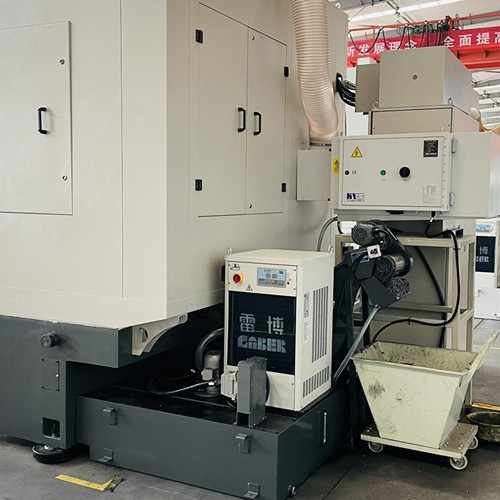What is Gear Hobbing Machine Process?
Hobbing machines provide gear manufacturers a fast and accurate method for cutting parts. This is because of the generating nature of this particular cutting process.
Hobbing machines provide gear manufacturers a fast and accurate method for cutting parts. This is because of the generating nature of this particular cutting process. Gear hobbing is not a form cutting process, such as gashing or milling where the cutter is a conjugate form of the gear tooth. The hob generates a gear tooth profile by cutting several facets of each gear tooth profile through a synchronized rotation and feed of the work piece and cutter.
As the hob feeds across the face of the work piece at a fixed depth, gear teeth will gradually be generated by a series of cutting edges, each at a slightly different position. The number of cuts made to generate the gear tooth profile will correspond to the number of gashes of the hob. Simply put, more gashes produce a more accurate profile of the gear tooth.
The hobs several cutting edges will be working simultaneously, which provide significant potential for fast cutting speeds and/or short cycle times. With this realization, one can see the hobbing process’s advantage over other cutting processes.
All gear hobbing machines, whether mechanical or CNC, consist of five common elements.
1. A work spindle to rotate the work piece
2. A cutter spindle to rotate the cutting tool, the hob
3. A means to rotate the work spindle and cutter spindle with an exact ratio, depending on the number of teeth of the gear and the number of threads of the hob
4. A means to traverse the hob across the face of the work piece
5. A means to adjust the center distance between the hob and work piece for different size work pieces and hobs

While the hob and work piece are rotating, the hob normally feeds axially across the gear face at the gear’s tooth depth to cut and produce the gear. In conventional hobbing, the direction of feed matches the direction of the cutting motion. Alternatively, in climb feeding, the feed is opposite to the direction of the cutting motion. Generally, conventional hobbing produces a better finish, whereas climb hobbing yields better tool life. For either method, the cutting forces of the hob should be directed towards the work spindle and not the tailstock.
Gear Hobbing Basics
Gear hobbing is a diverse and wide-ranging process that can be used to create several different gear types: Helical, worm and spur gears are some of the most common, but others are possible as well. It's carried out using a special form milling machine, one that contains a tool known simply as a hob.
The hob is the tool that directly generates the teeth for both gears and splines, and it does so with relative simplicity compared to other gear manufacturing types. It allows for high-volume production of these gear types.
The final words
To cut a helical gear, a standard hob cutter can be used. Mechanical hobbing machines provide a differential motion through a series of change gears to generate a gear tooth helix. Today, CNC hobbing machines electronically provide this necessary differential to produce helical gears. Contact gear hobbing machine supplier for a quote!